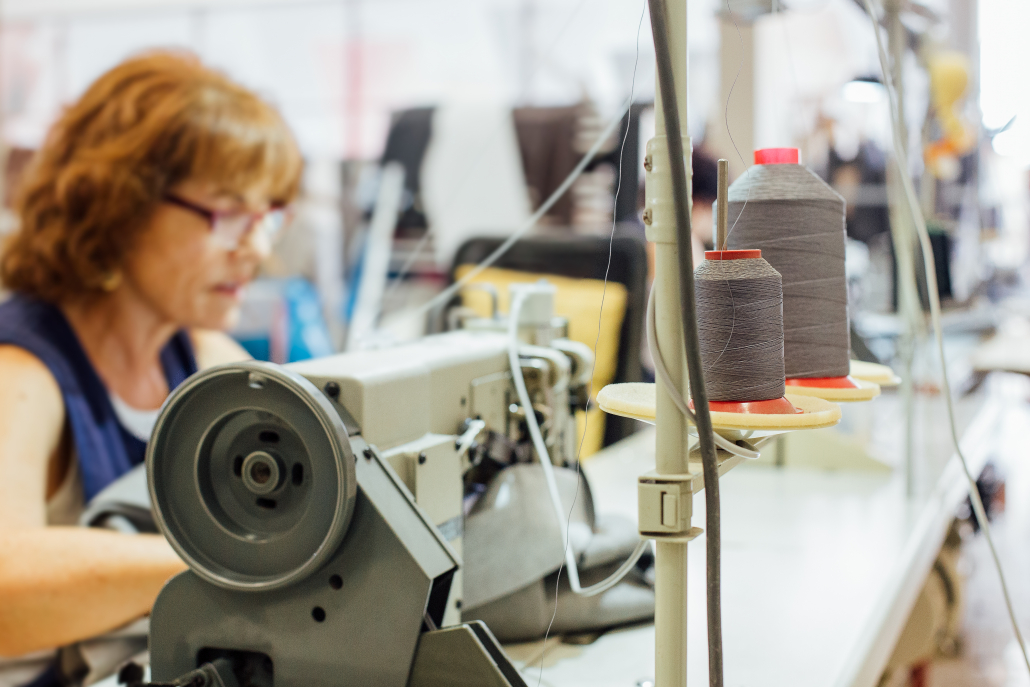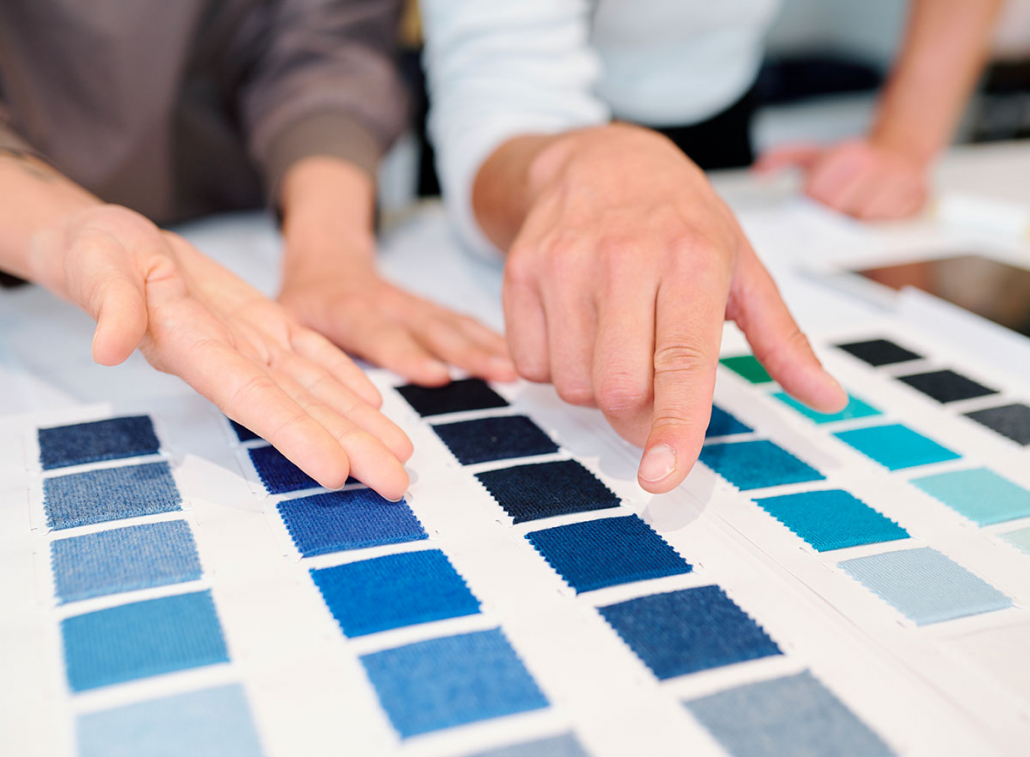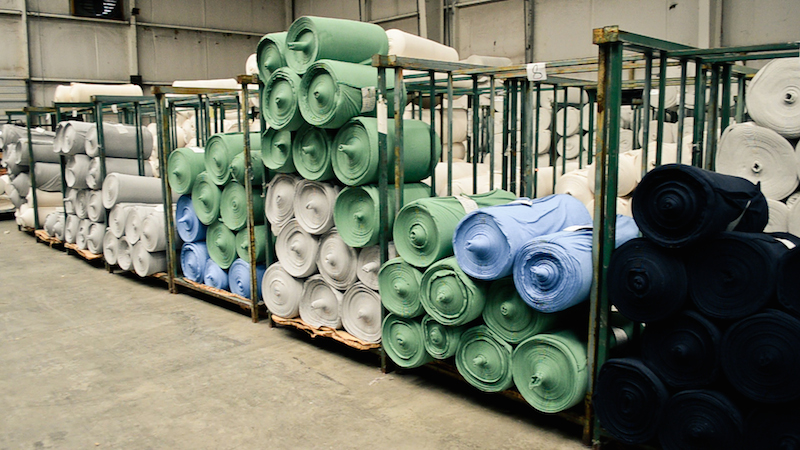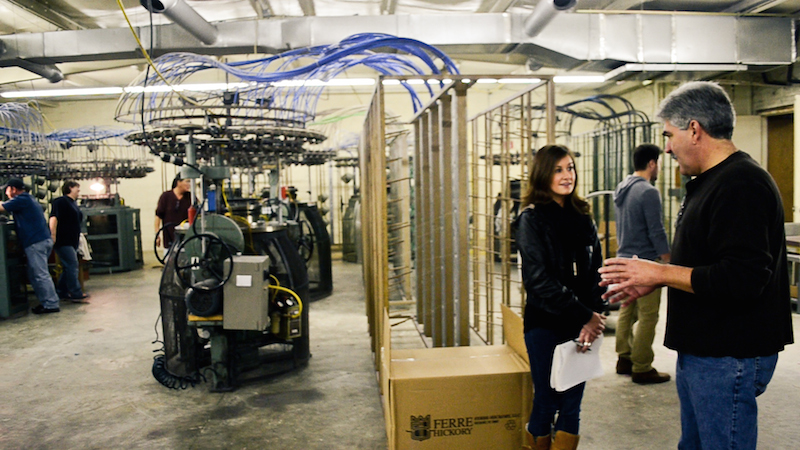I know a bunch of you are planning on attending the fabric trade shows in NYC this week — there’s Premiere Vision, DG Expo and TexWorld all happening in the next five days.
I remember going to my first trade show several years ago and even though it was one of the smaller ones, I recall feeling very overwhelmed.
A big venue? With tons of industry veterans? And you’re just supposed to walk up and start talking to them?
An introvert’s nightmare.
In light of some of the questions that may be coming up for you, I thought I’d share some of my tips for having a successful trade show experience:
1.) KNOW WHAT YOUR END GOAL IS.
Many of you are flying in from out of town to attend these trade shows, which means you’re dishing out several hundred dollars on airfare, hotel rooms, taxis and overpriced food.
The last thing you want is to leave NYC regretting the trip and wishing you hadn’t spent the money. Chances are, you’re going to feel overwhelmed when you arrive at your first show — especially Premiere Vision and TexWorld — so you need to be clear on your end goal.
Are you there to find a very specific type of fabric? Are you there to browse potential fabrics to use in your next collection? Are you there to network? Are you there to attend the seminars?
Your answer should not be, “Yes, to all of the above.” Pick one or two goals to focus on, write them down on a piece of paper or in the notes app on your phone.
If you start to feel off-track over the next few days, look back at what you wrote down and it will help center you.
2.) GET A LIST OF VENDORS IN ADVANCE.
All of the shows will either have a printed list of vendors when you arrive (kind of like a program or playbill), but many of them also have a list of vendors on their websites.
Take some time to sit down with your phone or computer and Google search the vendors list.
You’re probably not going to be able to get through all of them, so you want to make sure you’re prioritizing the vendors that are most likely to have what you’re looking for. (Again, this is where your goal for the week comes in handy.)
Mark asterisks or highlight the vendors that you want to see and talk to, and then…
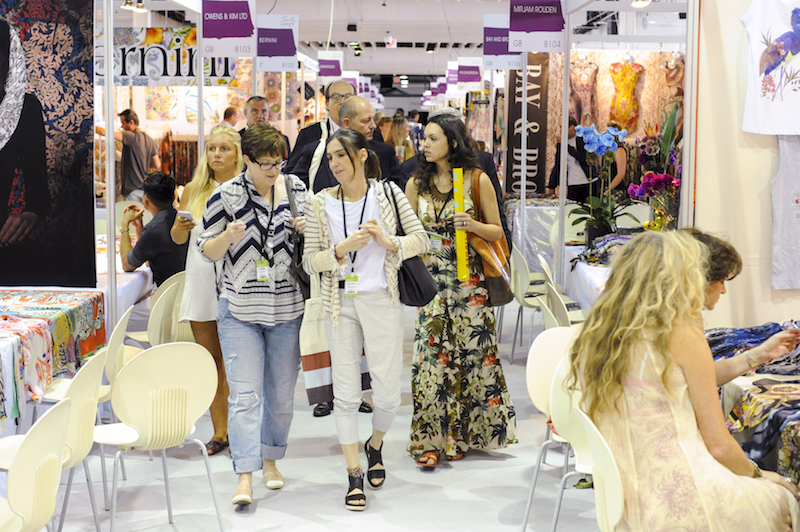
3.) MAP OUT YOUR CONQUESTS.
Cross reference the list of vendors you want to visit with the map that is provided by the show.
Again, mark asterisks or highlight the locations of the vendors you’re interested in and be strategic about the route you’re going to take so you can hit up each vendor without backtracking.
4.) SHOW YOUR VALUE AS A CUSTOMER.
You’ve determined the vendors you want to talk to, you’ve mapped out a route through the venue, and you’re about to approach your first table…
First you’ll see a bunch of binders, swatch books and marketing material on the vendor’s table. If the binders are labeled properly, you can potentially find the fabric you’re looking for without asking for the help of the sales rep or supplier.
Depending on the vendor, there could be a small line of people waiting to talk to the sales rep or it could be just you at the table. Either way, when you get the chance to initiate a conversation be courteous of the rep’s time.
Yes, they’re selling to you but there are hundreds (if not thousands) of people walking through the show.
The sales rep doesn’t need to hear your life story about why you’re starting your line. They don’t need to hear an explanation of the mission behind your company. And they don’t need to hear about the difficulties you’ve had finding the right fabric.
Your job is to show them that you’re a serious and professional prospective client who has the resources and money to make a wholesale purchase from them (in their minds, the larger the better). You can communicate this effectively by taking the time to…
5.) MAKE A SPECIFIC ASK.
One of the last things a vendor wants to hear is, “Do you have organic cotton?” Or “What do you have for blue fabrics?”
If you’re attending a show to simply browse around, then you can say so. But if you’re looking for something specific and you’re going to ask for help, then you need to be very clear about what it is you’re looking for.
Ideally, you’ll be able to tell the rep the fiber, weave, weight and color you want. If you already have a swatch or sample of the fabric you’re looking for, bring it and show it to the rep.

6.) GET THEIR BUSINESS CARD.
Again, this seems counterintuitive since the vendor is supposed to be selling to you, but this industry isn’t like many others. Don’t expect for a sales rep to come running after you. It’s on you to get their information and follow up with them.
Tip: Instead of collecting a bunch of business cards that can easily get lost, take a photo of the sales rep’s business card. You can do the same thing with the swatch cards and fabric samples you’re interested in — snap a photo of the item number and fabric description.
7.) DON’T RUSH INTO ANYTHING.
As a small business owner, don’t feel pressure to make any decisions in the moment. If you have photos of the fabrics you like, as well as contact information, you can weigh your options after some thought and email the vendors when you get home.
In your follow up email, mention the show where you met them and again, keep your request short, sweet and specific.
—
Although overwhelming at times, trade shows are one of the most exciting parts of being in this industry. There is an energy and a vibe that is hard to replicate at other events.
If at any time it becomes too much, pop out for a cup of coffee or find a quiet corner to look back through your map and vendors list. This should be FUN! So try and enjoy yourself : )
Want more fabric sourcing tips, read 4 Mistakes to Avoid When Sourcing Fabric.
All photos courtesy of Premiere Vision.


